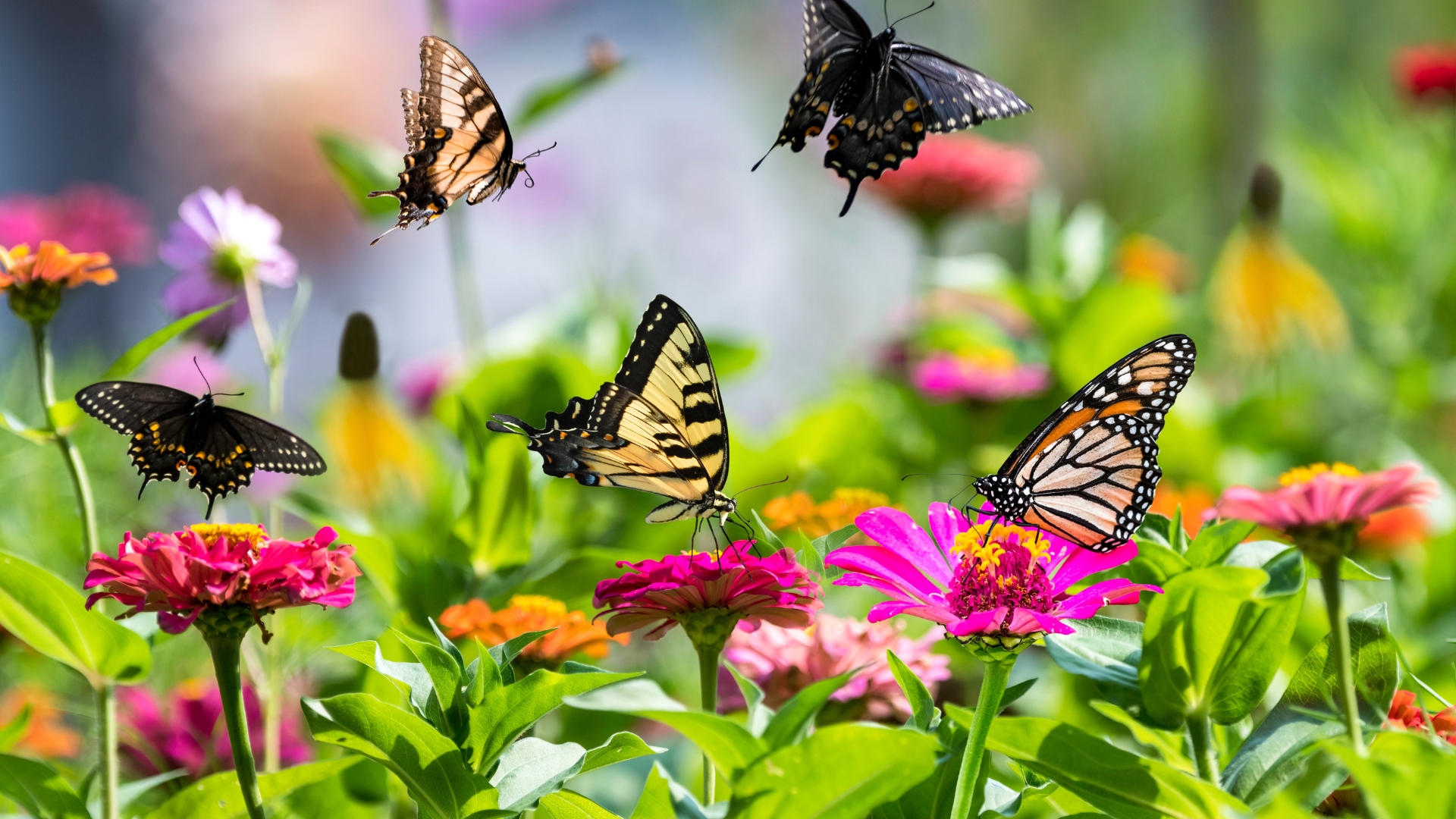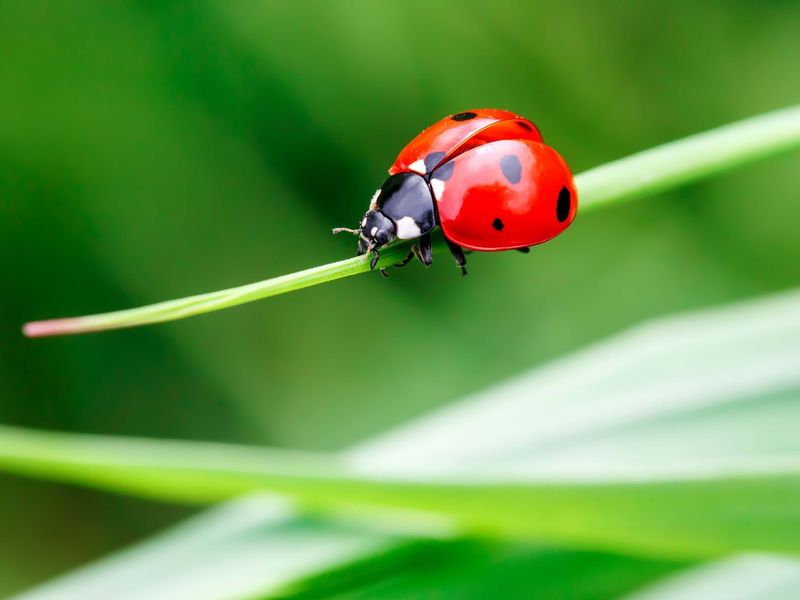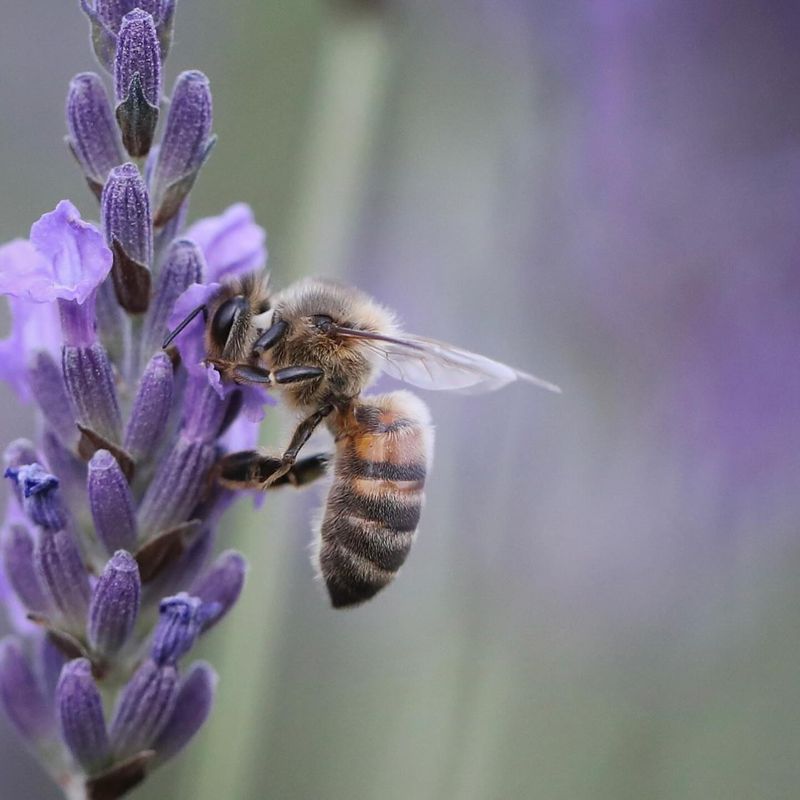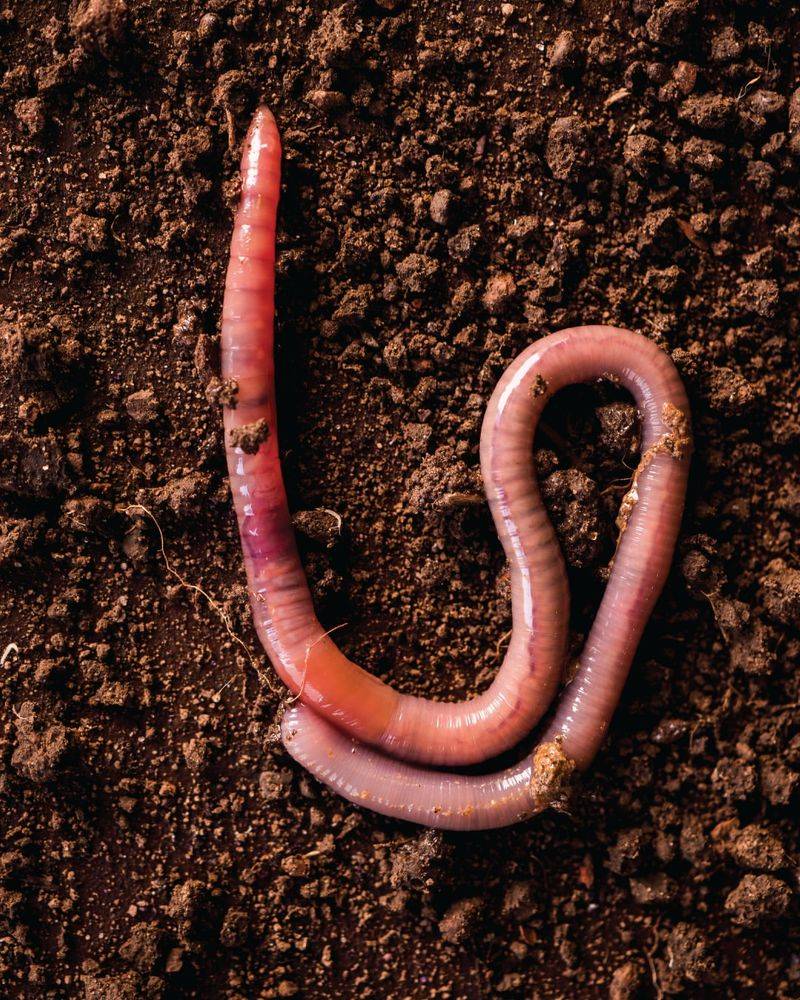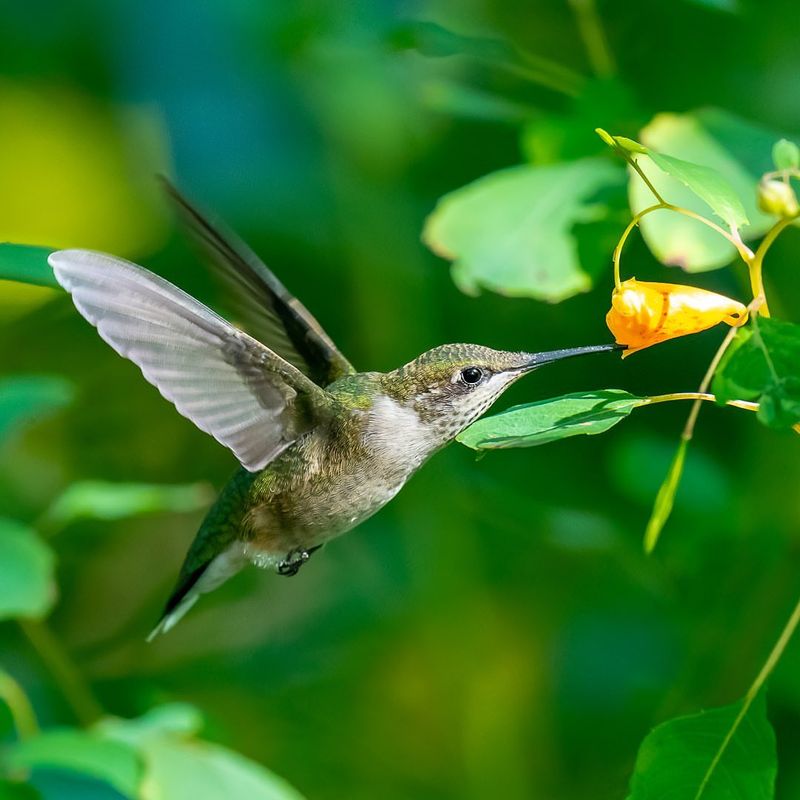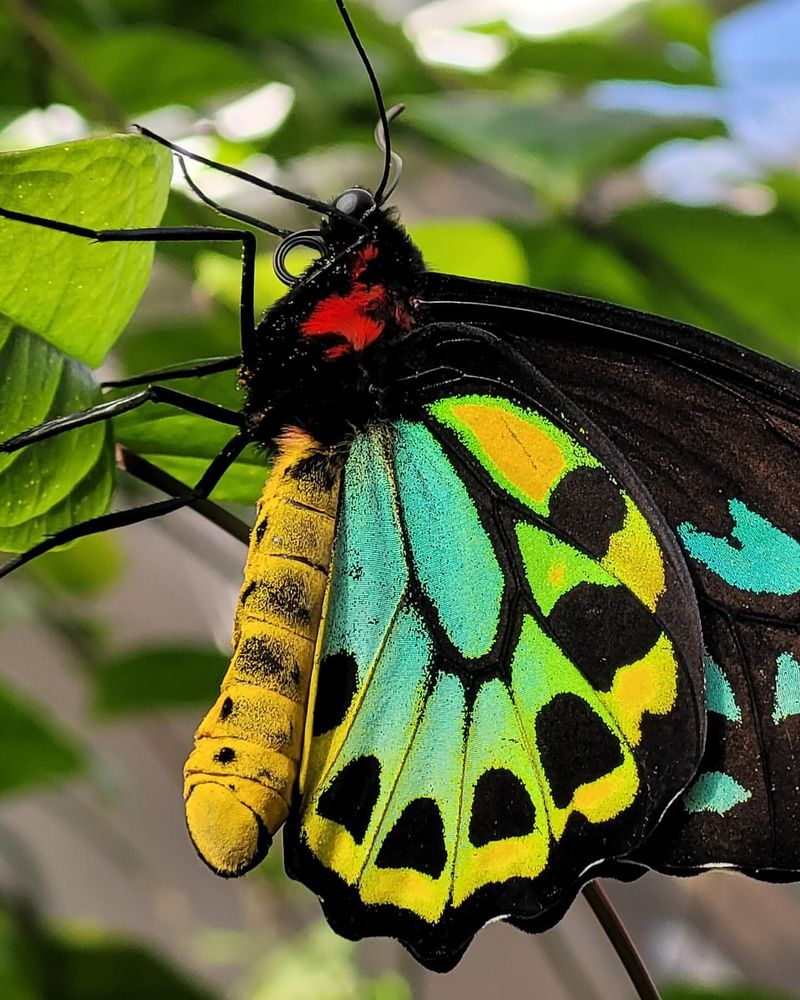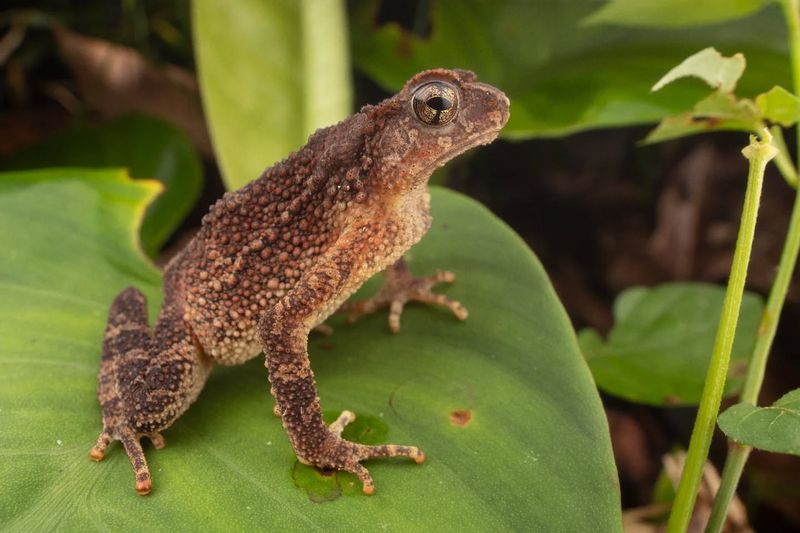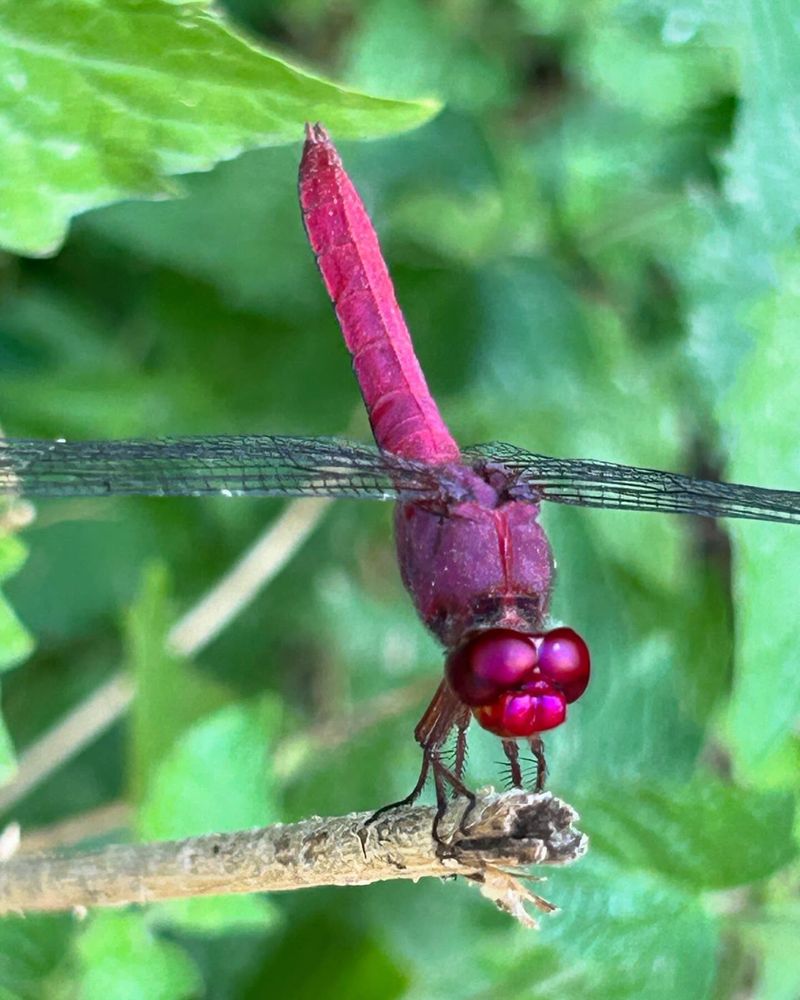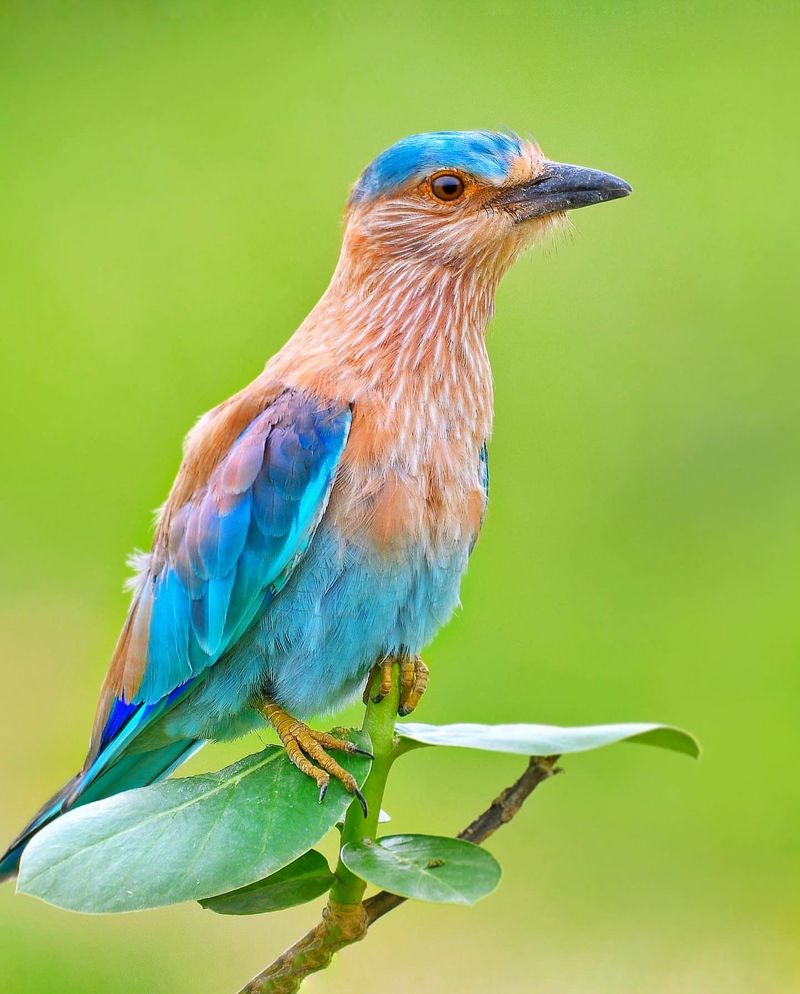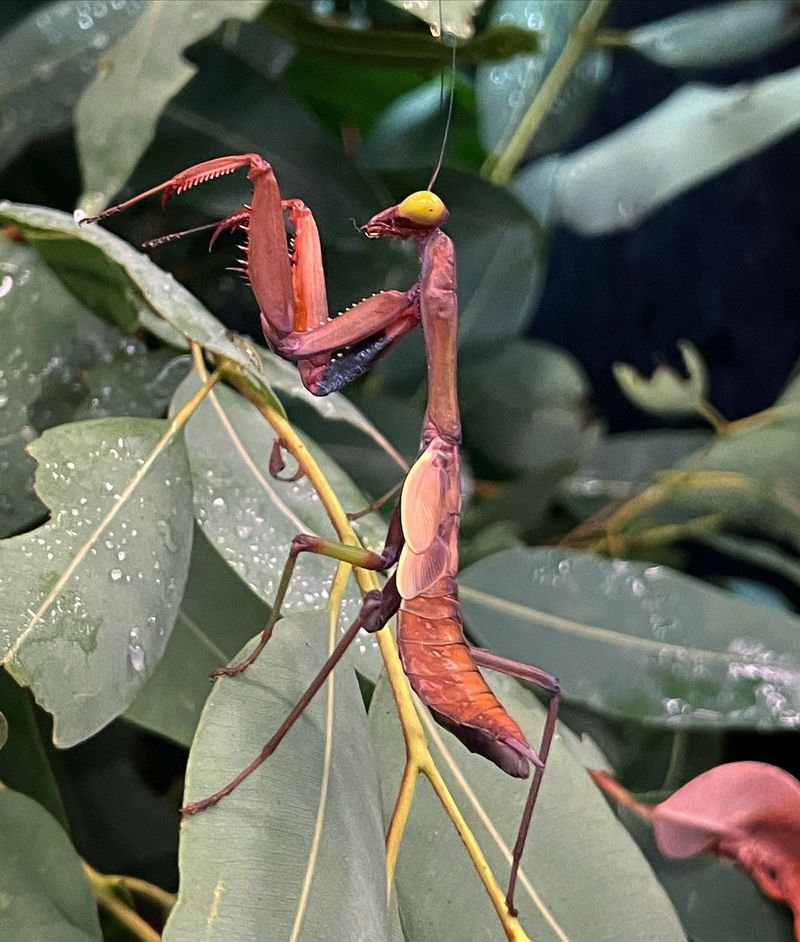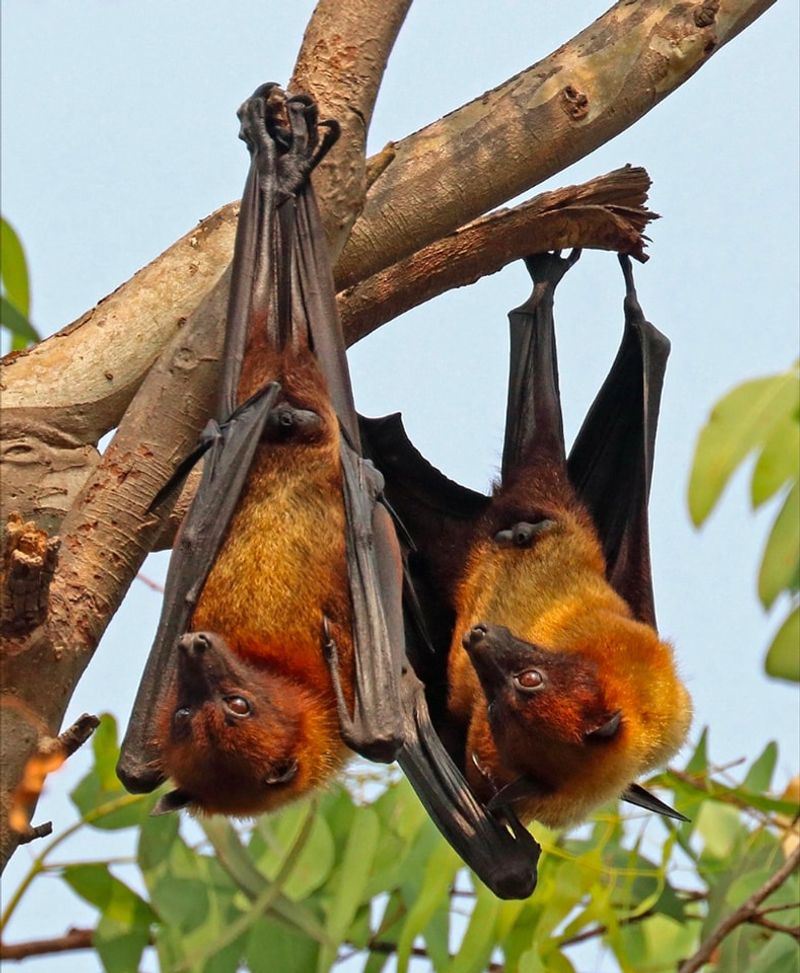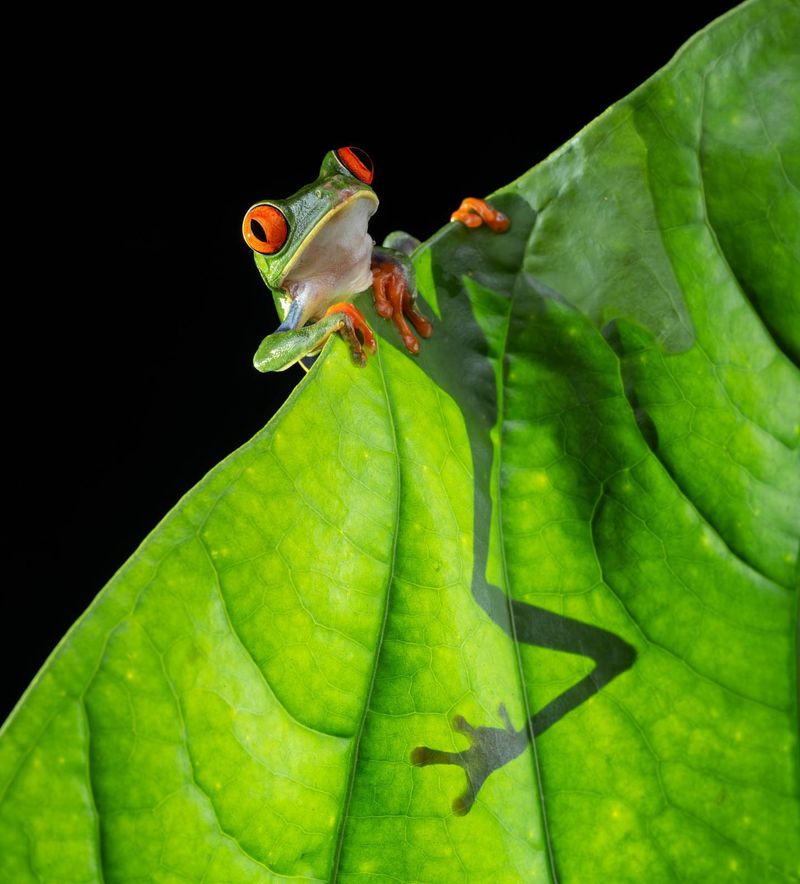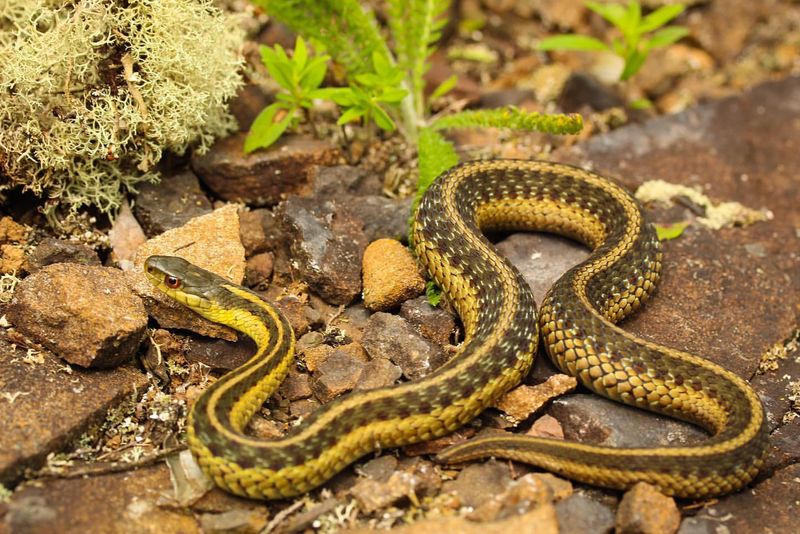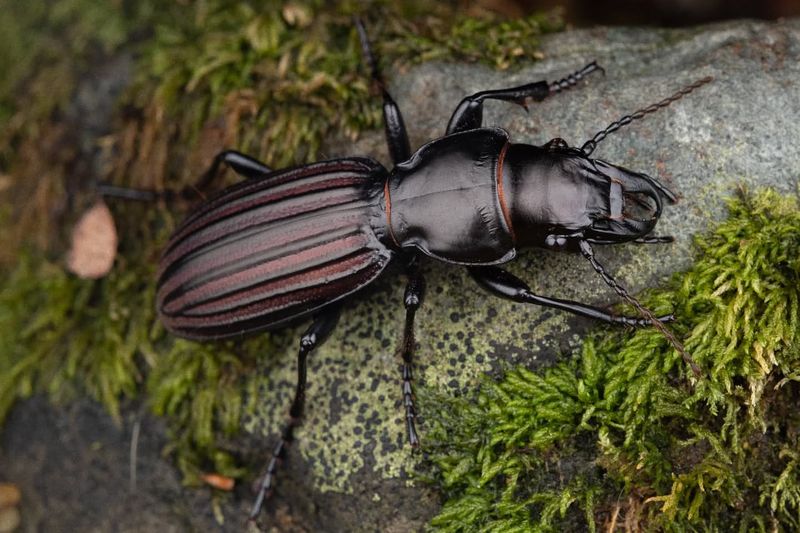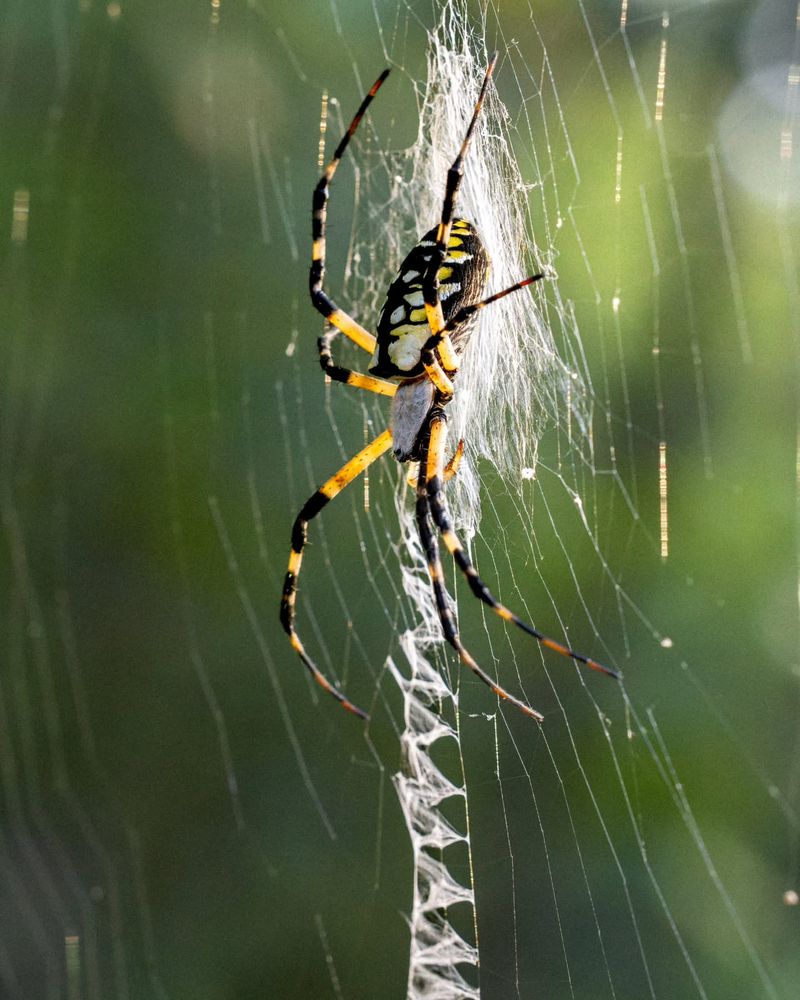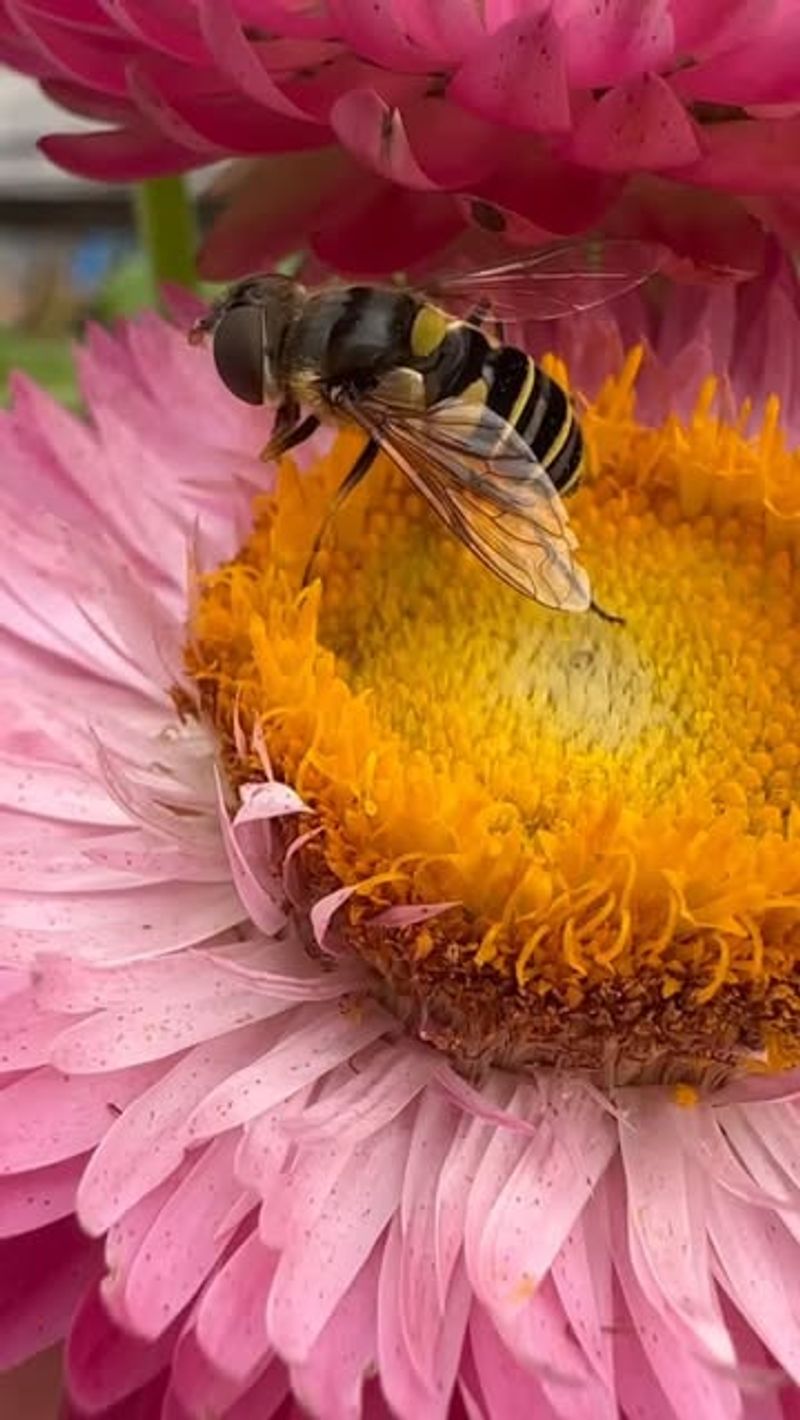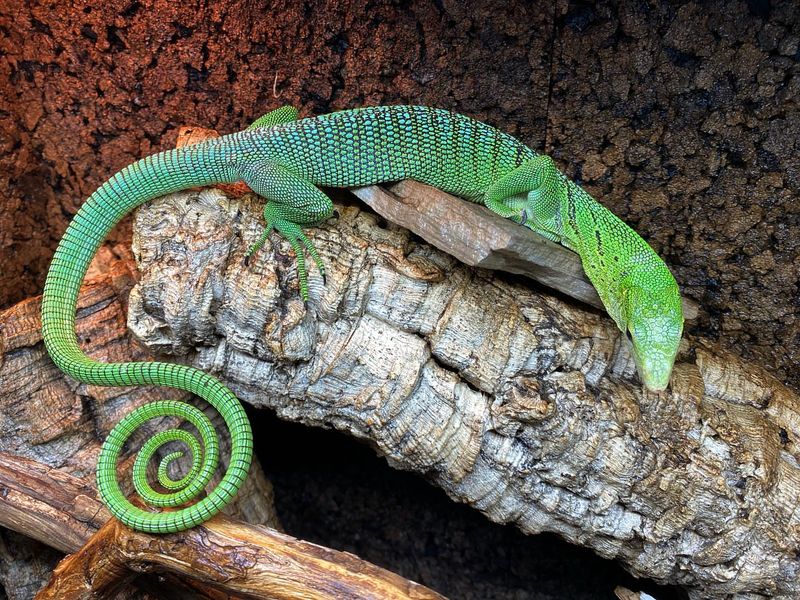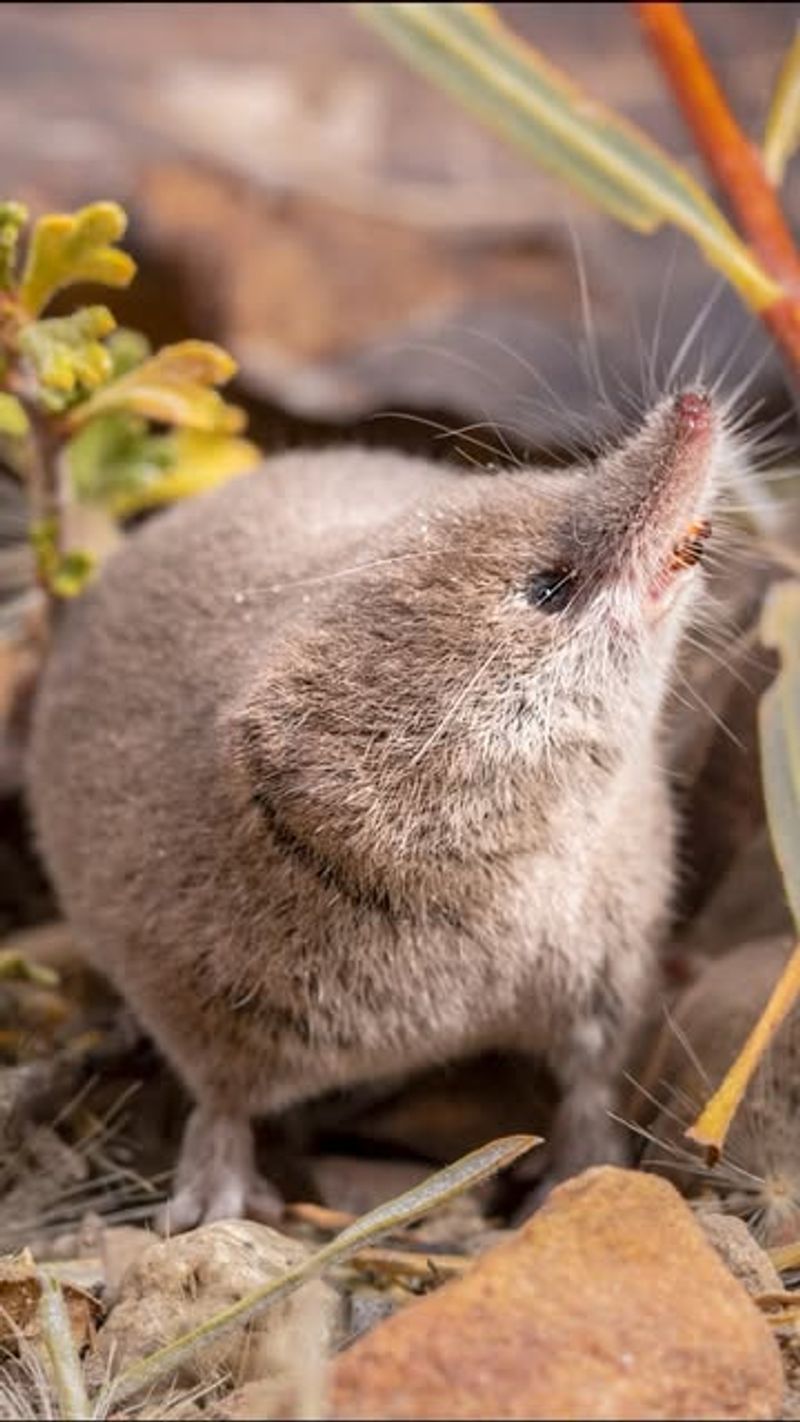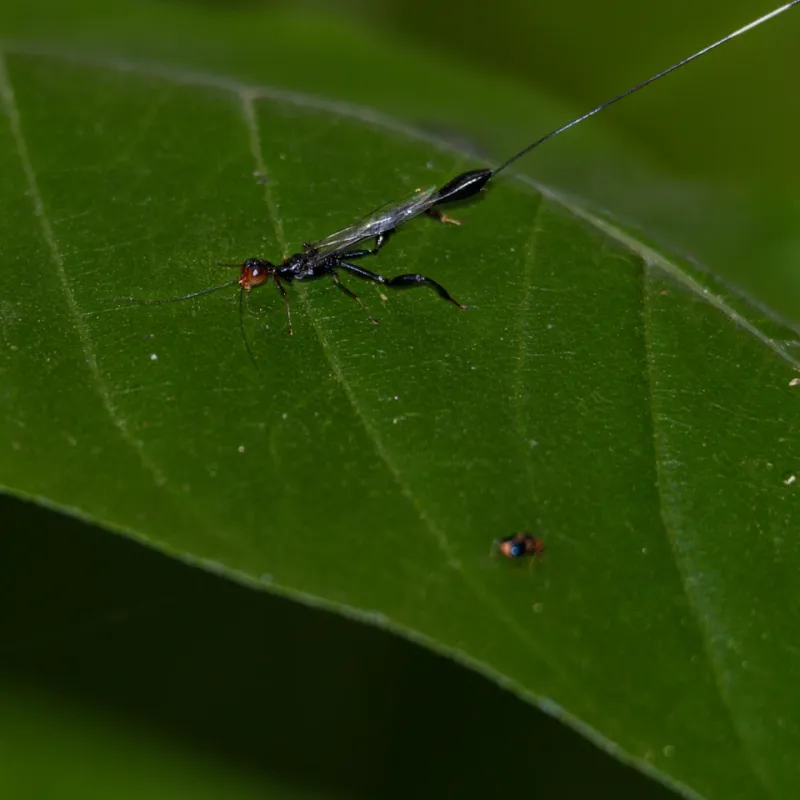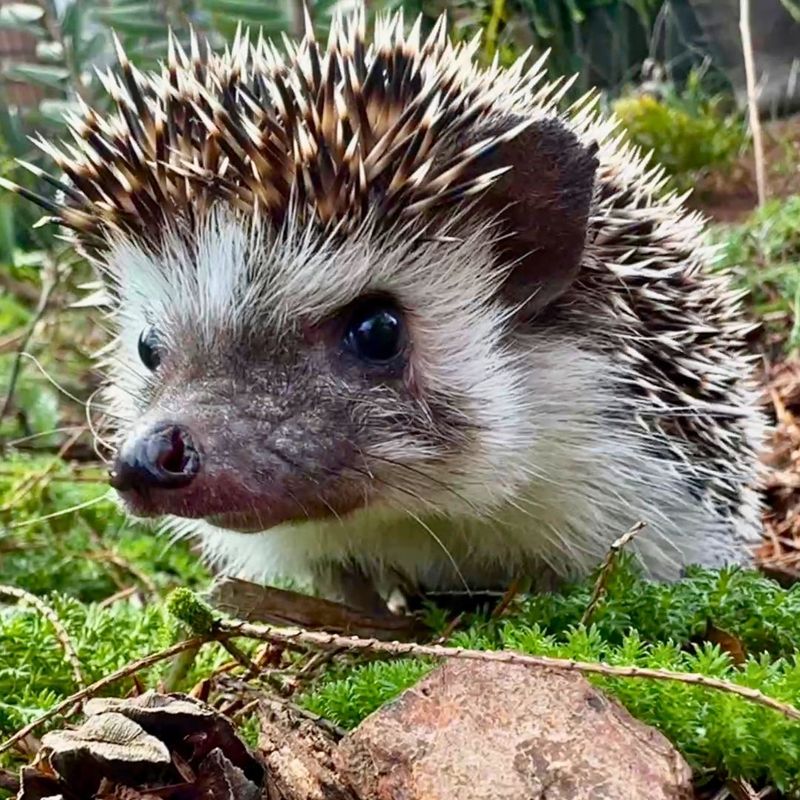Some garden guests are more than just cute—they’re a sign that your little ecosystem is thriving. I started paying closer attention to who was stopping by, and it turns out certain animals show up when your garden is healthy, balanced, and full of life.
From pollinators to pest-controllers, these 20 visitors are the ultimate garden compliments. I’ve had a few surprise me, and now I look forward to spotting them.
If these animals are hanging around, you’re definitely doing something right!
1. Ladybugs
Spotted these red beetles with black dots? You’ve hit the garden jackpot! Ladybugs feast on aphids, mealybugs, and other plant-destroying pests, with some species devouring up to 5,000 aphids in their lifetime.
Your garden has clearly achieved a healthy balance without harsh chemicals. These natural pest controllers indicate you’ve created an inviting habitat with diverse plants and minimal pesticides.
2. Honeybees
Buzzing visitors in your flowerbeds signal exceptional garden health! Honeybees pollinate approximately 80% of flowering plants, making them essential for vegetable and fruit production in your garden space.
Their presence means you’ve created a chemical-free environment with diverse, nectar-rich flowers blooming throughout growing seasons. Pat yourself on the back—you’re supporting these endangered pollinators while ensuring abundant harvests.
3. Earthworms
Digging up these wriggly creatures while planting? Celebrate! Earthworms are underground ecosystem engineers, creating tunnels that improve soil aeration and water penetration while leaving behind nutrient-rich castings.
A handful of garden soil containing numerous earthworms indicates exceptional soil health. Their presence shows you’ve built organic matter-rich soil and avoided harmful chemicals that would drive these sensitive creatures away.
4. Hummingbirds
Caught a glimpse of these jewel-toned aerial acrobats? Lucky you! Hummingbirds visit gardens with abundant nectar sources and are surprisingly territorial about their favorite feeding spots.
Their appearance indicates you’ve provided tubular flowers in red, orange, or pink hues. Beyond beauty, these tiny dynamos pollinate while consuming small insects, bringing double benefits to your thriving outdoor sanctuary.
5. Butterflies
Fluttering rainbow wings among your plants mean your garden has become butterfly paradise! These delicate creatures need both nectar plants for adults and specific host plants where females lay eggs for caterpillars to feed.
Your garden clearly offers this diversity along with sunny, sheltered spots for basking. Butterflies avoid chemically-treated areas, so their presence confirms your garden is both beautiful and ecologically sound.
6. Toads
Found a warty friend hiding under your hostas? Garden gold! A single toad can consume up to 10,000 insects during one growing season, including slugs, mosquitoes, and harmful beetles that damage plants.
These amphibians seek gardens with damp, shady hideaways and clean water sources. Their presence indicates you’ve created a pesticide-free environment with healthy microhabitats and abundant natural pest populations for them to control.
7. Dragonflies
Spotted these iridescent aerial hunters patrolling your garden? They’re mosquito-destroying machines! Dragonflies consume their body weight in mosquitoes and other small insects daily while adding shimmer and movement to your outdoor space.
Their appearance signals you’ve created a complete ecosystem, likely including a water feature. These sensitive creatures only thrive in clean environments, confirming your garden management practices are ecologically sound.
8. Birds
Morning filled with chirping and singing? Congratulations on creating bird paradise! Different species visit for various reasons—some for berries, others for seeds, and many for the insects your plants host.
A diverse bird population indicates your garden provides multiple food sources, clean water, and safe nesting sites. Birds are excellent indicators of biodiversity, showing you’ve successfully created a complex, healthy ecosystem.
9. Praying Mantis
Spotted this otherworldly predator perched among your plants? Consider yourself blessed! Praying mantises are voracious hunters that ambush harmful garden pests including caterpillars, beetles, and even small rodents.
Their presence indicates your garden has reached ecological maturity with complex food webs. These beneficial insects need pesticide-free environments with diverse plantings that provide both hunting grounds and places to deposit their distinctive egg cases.
10. Bats
Noticed flying shadows at dusk? Your garden has achieved nighttime excellence! Bats can consume thousands of mosquitoes and other night-flying insects hourly, providing natural pest control while you sleep.
Their presence indicates your property offers both insect abundance and potential roosting sites. By attracting these nocturnal mammals, you’ve extended your garden’s ecological functioning around the clock—truly the mark of a comprehensive healthy ecosystem.
11. Frogs
Heard evening croaking concerts from your garden? You’ve created amphibian heaven! Frogs consume vast quantities of insects, including mosquitoes, flies, and many crop-damaging pests that emerge at night.
Their sensitive skin makes them excellent environmental indicators—they simply cannot survive in chemically-treated areas. Your garden clearly provides clean water, damp hideaways, and the perfect balance of moisture and plant cover they require.
12. Garter Snakes
Glimpsed a slender, striped serpent slithering through your garden beds? Don’t panic—celebrate! Garter snakes feast on slugs, grubs, and rodents that damage plants and vegetables.
These beneficial reptiles seek gardens with ground cover, rock piles, and minimal chemical use. Their presence indicates your garden provides multiple microhabitats and supports complex food chains, hallmarks of a truly healthy ecosystem.
13. Ground Beetles
Noticed shiny black beetles scurrying when moving mulch? You’ve got garden guardians! Ground beetles hunt at night, consuming slug eggs, cutworms, and other soil-dwelling pests that damage young plants.
These beneficial insects require stable environments with undisturbed soil and year-round ground cover. Their abundance signals you’ve created a garden with healthy soil structure, minimal tilling, and plenty of protective mulch—all sustainable gardening best practices.
14. Spiders
Discovered intricate webs glistening with morning dew? Your garden has excellent pest management! Spiders catch flying insects, including mosquitoes and many crop-damaging pests that might otherwise multiply unchecked.
These eight-legged allies indicate your garden supports complex food webs. Different spider species occupy various garden niches—from soil to treetops—showing you’ve created diverse habitats and avoided broad-spectrum pesticides that would eliminate these helpful predators.
15. Hoverflies
Noticed bee-like insects that seem to float in mid-air? Meet the hoverfly, one of gardening’s unsung heroes! Adult hoverflies pollinate flowers while their larvae devour aphids and other soft-bodied pests.
These beneficial insects seek gardens with diverse flowering plants, especially members of the daisy and carrot families. Their presence indicates you’ve created an environment that supports multiple life stages of beneficial insects—truly ecological gardening at its finest.
16. Lizards
Caught sight of scaly sunbathers on your garden rocks? Lucky you! Lizards consume significant numbers of insects, including ants, flies, and beetles that might otherwise damage plants.
These reptiles need pesticide-free environments with sunny basking spots and nearby cover for quick retreats. Their presence indicates your garden provides structural diversity with rocks, logs, and various vegetation layers—essential elements of wildlife-friendly spaces.
17. Centipedes
Uncovered many-legged creatures when moving garden stones? Don’t recoil—rejoice! Garden centipedes are voracious predators of soil pests including root-damaging insects and their larvae.
These beneficial arthropods require moist, undisturbed environments with ample organic matter. Their presence signals healthy soil ecology with established decomposition cycles and minimal soil disturbance—hallmarks of sustainable garden management that builds soil health over time.
18. Shrews
Glimpsed tiny mouse-like creatures with pointed snouts? You’ve attracted garden allies! Shrews have incredibly fast metabolisms, requiring them to eat nearly constantly—mostly insects, grubs, and other small invertebrates.
These diminutive mammals need gardens with dense ground cover and undisturbed areas. Their presence indicates your garden provides both protective habitat and abundant food sources in the form of smaller creatures—evidence of a thriving, multilayered ecosystem.
19. Parasitic Wasps
Noticed tiny, non-stinging wasps hovering around your plants? Nature’s pest control has arrived! These beneficial insects lay eggs inside pest insects or their eggs, effectively turning garden pests into nurseries for more beneficial wasps.
Most are so small you’ll rarely notice them directly. Their presence indicates your garden supports complex predator-prey relationships without chemical interference—the gold standard of ecological gardening that maintains natural balances.
20. Hedgehogs
Spotted a spiny visitor snuffling through your garden at dusk? Treasure this encounter! Hedgehogs devour slugs, snails, and various insects while adding undeniable charm to your outdoor space.
These nocturnal mammals seek gardens with access points, shelter options, and minimal hazards like chemicals or netting. Their presence indicates your garden provides safe passage, natural food sources, and suitable nesting sites—true wildlife-friendly gardening.

